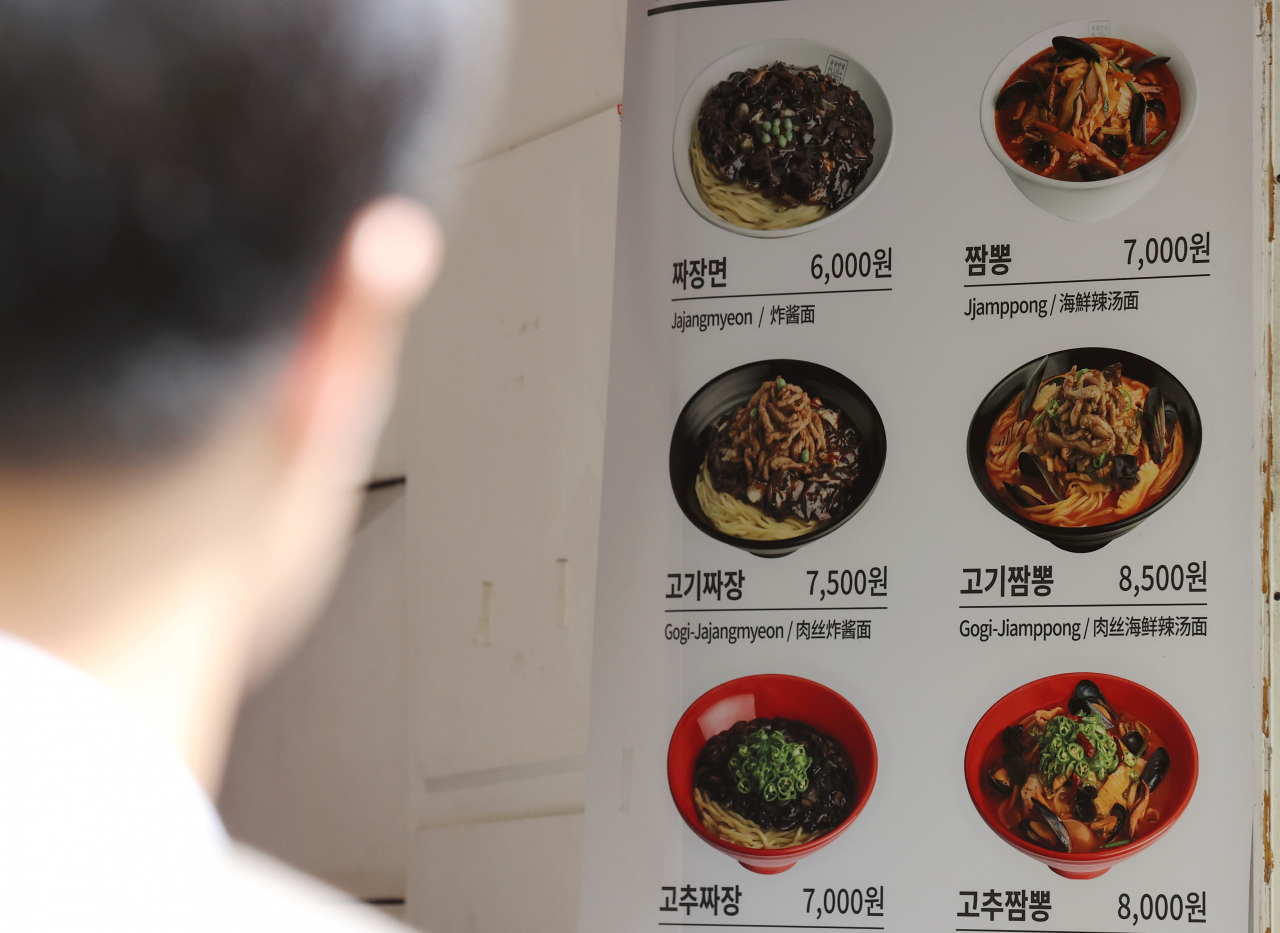
Price increase rates of about 80 percent of restaurant menus exceeded the price increase rate of a market basket of consumer goods in September, according to data on Monday.
According to Statistics Korea, the consumer price index, which functions as an economic metric for the price of a weighted average market basket of consumer goods, showed an on-year growth of 3.7 percent in September.
Meanwhile, the increase rate in the sector for dining out, a key indicator of inflation in the food sector for everyday consumers, logged 4.9 percent, 1.2 percentage points higher than the increase rate recorded for general consumer goods.
Of the 39 items surveyed, 31 popular dining out menu items saw their price increase rate exceed the average on-year price growth rate in consumer goods.
Pizza rose most, seeing a 12.3 percent on-year growth in prices. The price of duck sold at restaurants rose second-most, with an increase of 7.3 percent.
Naengmyun (cold noodles) and porridge followed in the list, each with a 6.9 percent on-year growth in prices, while jajangmyun (black bean noodles) and dosirak (prepackaged meals) saw on-year growth of 6.8 percent each. The price of gimbap rose by 6.6 percent on-year, while tteokbokki (spicy rice cakes) went up by 6.4 percent, coming next on the list.
The data also showed that costs of processed foods had increased at a faster rate than average consumer goods.
Of the 73 items in the processed food sector, the increase rate of 45 items, or some 61 percent, exceeded the price increase rate of average consumer goods.
Gochujang had the highest price increase rate of 27.3 percent, followed by dressing (23.7 percent), glass noodles (19.5 percent), cheese (17.7 percent), salt (17.3 percent), sugar (16.9 percent), pasta (16.1 percent), fish cakes (16 percent) and sesame oil (15.9 percent).
Bottled water followed in the list, rising by 9.6 percent, while milk rose by 9.3 percent.
In regard to the processed foods, costs of dairy products are largely expected to increase further in the year amid the increase in the cost of raw milk, which officially started to take effect in October. Starting this month, after milk firms raised their product prices by an average of some 5 percent, snack maker Binggrae boosted prices of its dairy snacks by some 5 to 9 percent. Food firm Dongwon F&B also raised prices of dairy products by some 5 percent.
"Everything is rising. Labor costs, utility bills and even the delivery fees. Most importantly, the cost of food materials, which take up the majority of restaurants' expenses, are ever-increasing. I expect the price of dining out to likely rise further in the future," said an owner of a Korean restaurant in Seodaemun-gu, Seoul.
Meanwhile, the CPI rose by the highest rate in five months in September, amid increasing costs of agricultural goods and oil.
In September, costs of agricultural, livestock and fisheries products rose by 3.7 percent on-year, 1 percentage point higher than the previous month. Oil prices fell by 4.9 percent, continuing their decline for an eighth consecutive month. However, compared to the decline rate logged in July (25.9 percent) and August (11 percent), the decline was the lowest in six months, since the country saw a 1.1 percent on-year decline in oil prices in February.



















